Vegan risotto doesn’t have to be difficult to make. In this post, we show you how easy it is to make a creamy vegan risotto with almost any vegetable of your choice.
Here we did it with asparagus, mushrooms, pumpkin, zucchini and peas in just about 20 minutes. This is an easy, everyday recipe for a quick and delicious dinner.
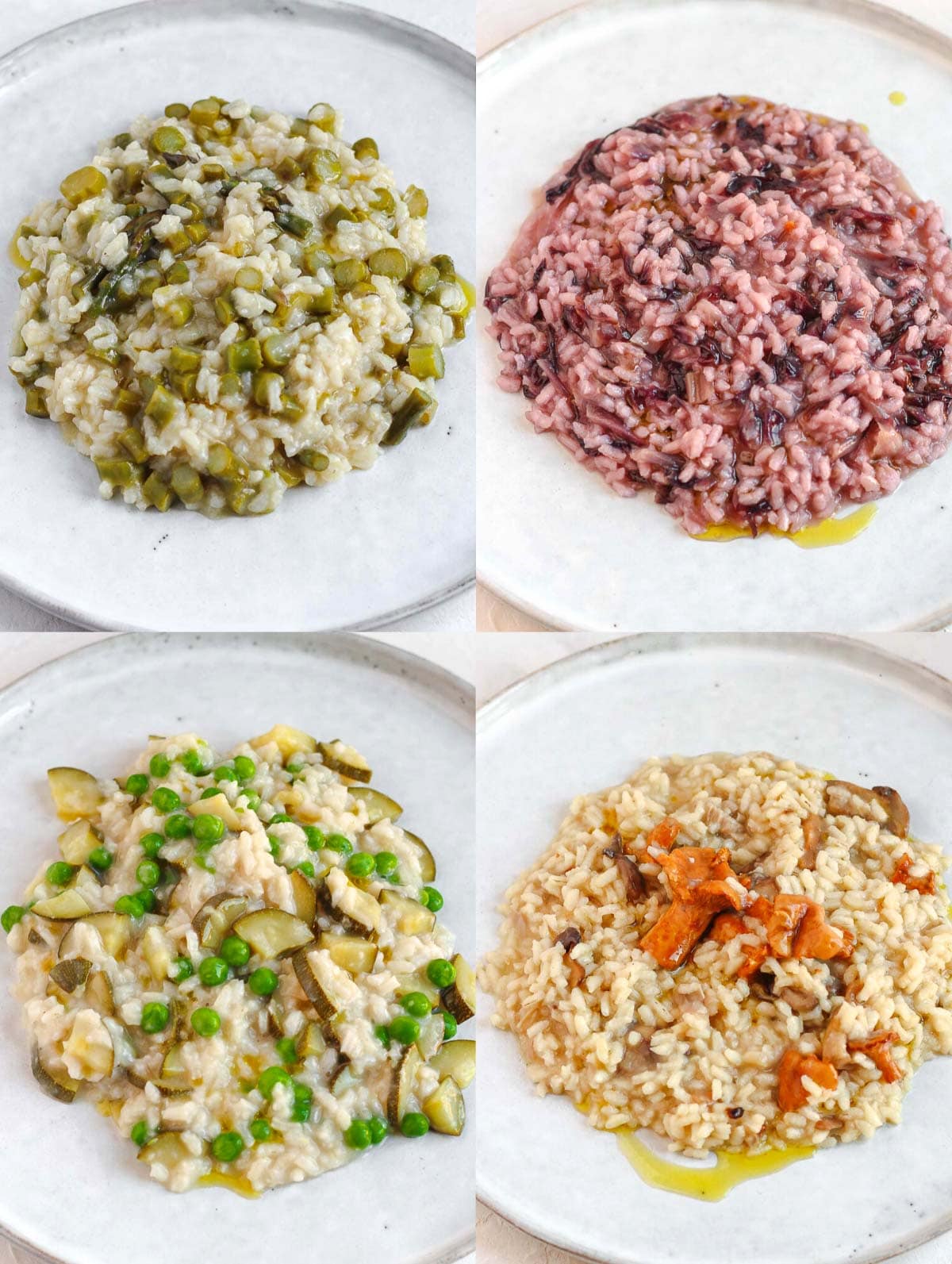
Table of Contents
Introduction
Since the time I was in cooking school, risotto has always been one of my favourite dishes to make. But the process and techniques to make risotto that I learned in cooking school are too elaborated for everyday cooking.
So with this post, we wanted to make a risotto recipe that doesn’t take too much time to make, that doesn’t use too many pots, and that can be made with most vegetables in no more than 20 minutes.
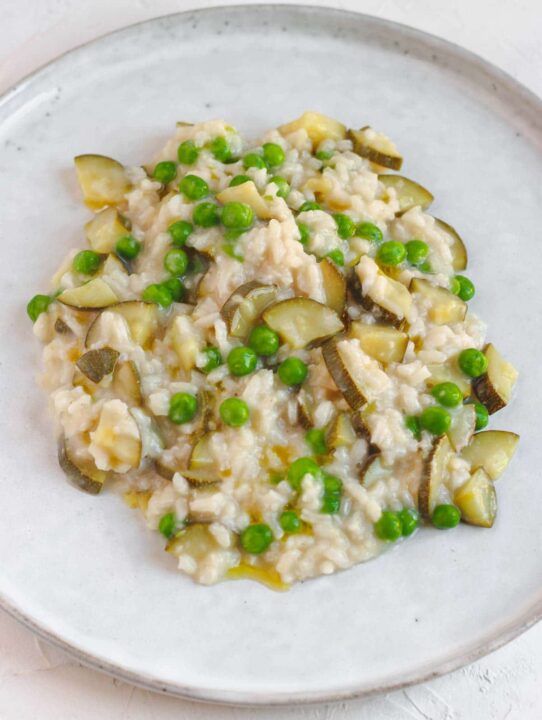
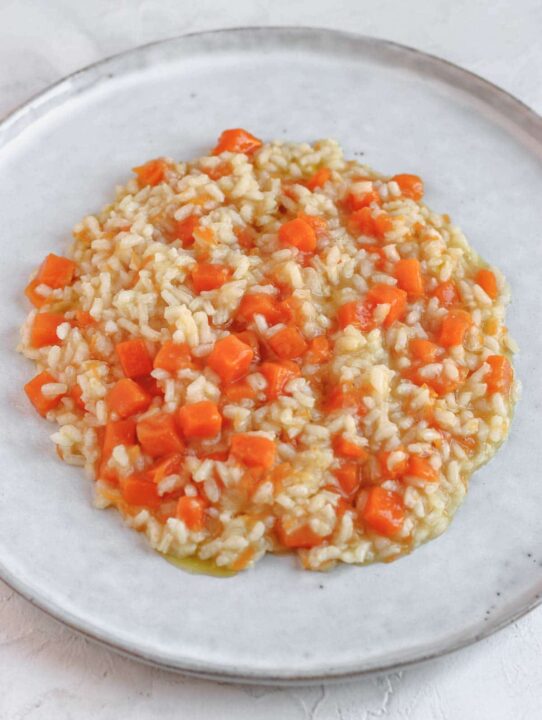
To do that we had to simplify. And we started from the veggies. We cut them in small dice and then cook them with the rice from the start.
This way, there’s no need to make another pan dirty, and the juices that come out of the vegetables have enough time to give an amazing flavour to the rice.
Then, to make the risotto creamy, what’s important is to use a rice that is made for risotto, with plenty of starch. It’s also very important to cook the rice with a little liquid at a time, to let the starch come out slowly and make the dish super creamy.
A quick history of risotto
When talking about risotto, what comes to mind is a creamy rice dish made in the northern regions of Italy, around the Milan area.
But a few people know that actually rice was most probably brought to Italy by the people of Catalonia (modern Spain), during the 1400, when they conquered Naples. From there, the Italians started creating all sorts of dishes with rice, including risotto.
Ingredients & Substitutions
- Vegetable of choice: this risotto really works with most veggies. We tried asparagus, mixed mushrooms, zucchini and peas, pumpkin, chicory, and artichokes, but feel free to freestyle and add your favorite vegetable.
Both fresh and frozen veggies work for this recipe. And yes, you can mix more veggies into the same risotto, for instance zucchini and peas, or tomatoes and red peppers, or mushrooms and asparagus. - Risotto rice: you can find risotto rice in most supermarkets these days. Risotto rice is better for risotto because it contains more starch which makes the whole dish creamier than other rice. Some good varieties are Arborio, Carnaroli, Vialone Nano, Roma.
If you can’t find risotto rice, then try to use short-grain rice. No jasmine or basmati. - White onion: we chop it very finely and use it to build flavor at the beginning with some olive oil.
- White wine: we use it to add acidity to the dish. You can replace it with some lemon juice. Acidity is like a flavor booster, so make sure to add some.
- Vegan butter: you can replace it with margarine or with olive oil. We add this at the end to add some extra creaminess to the risotto. If you want a low-fat version, you could add some unsweetened soy milk.
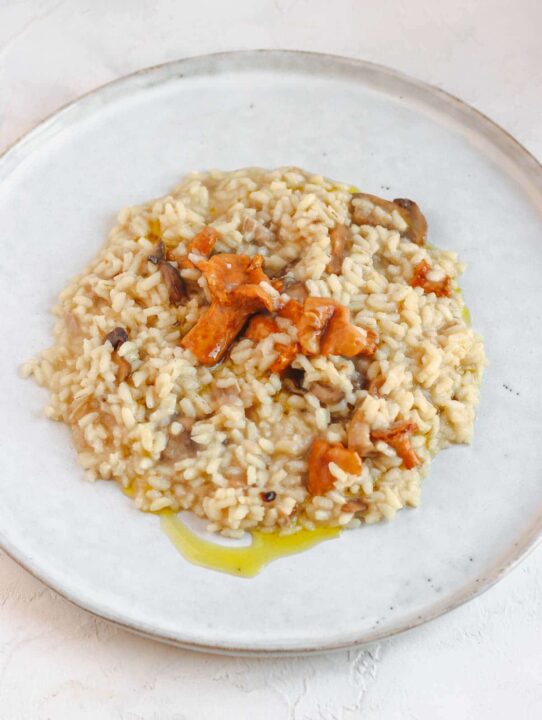
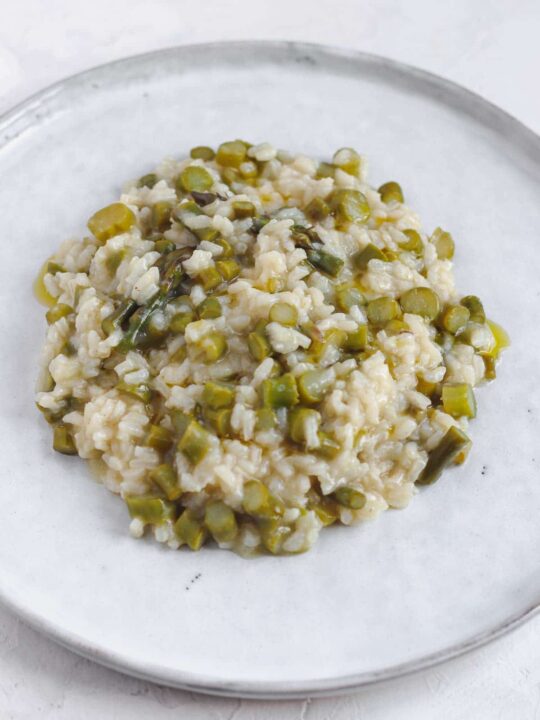
- Vegetable stock: there are many ways to make a good vegetable stock. You can use powder or cubes. You can use pre-made liquid stock. Or you can make it from scratch like we do by simply adding one carrot, one onion, and one stalk of celery to some boiling water.
But no matter which way you do it, here’s a little tip to make an even tastier vegetable stock. That is, add the scraps of the vegetables that you are using for your risotto to the vegetable stock. For instance, if you have some asparagus scraps – the bottom woody part of the asparagus – add them to the stock. Same with other clean scraps, like pumpkin skin, zucchini tops, potato peals, etc.
Also, I like to add a little salt to the vegetable stock, but not too much. Just a pinch, or there’s a risk that your risotto will be too salty. Taste the risotto before serving, and adjust for salt if needed.
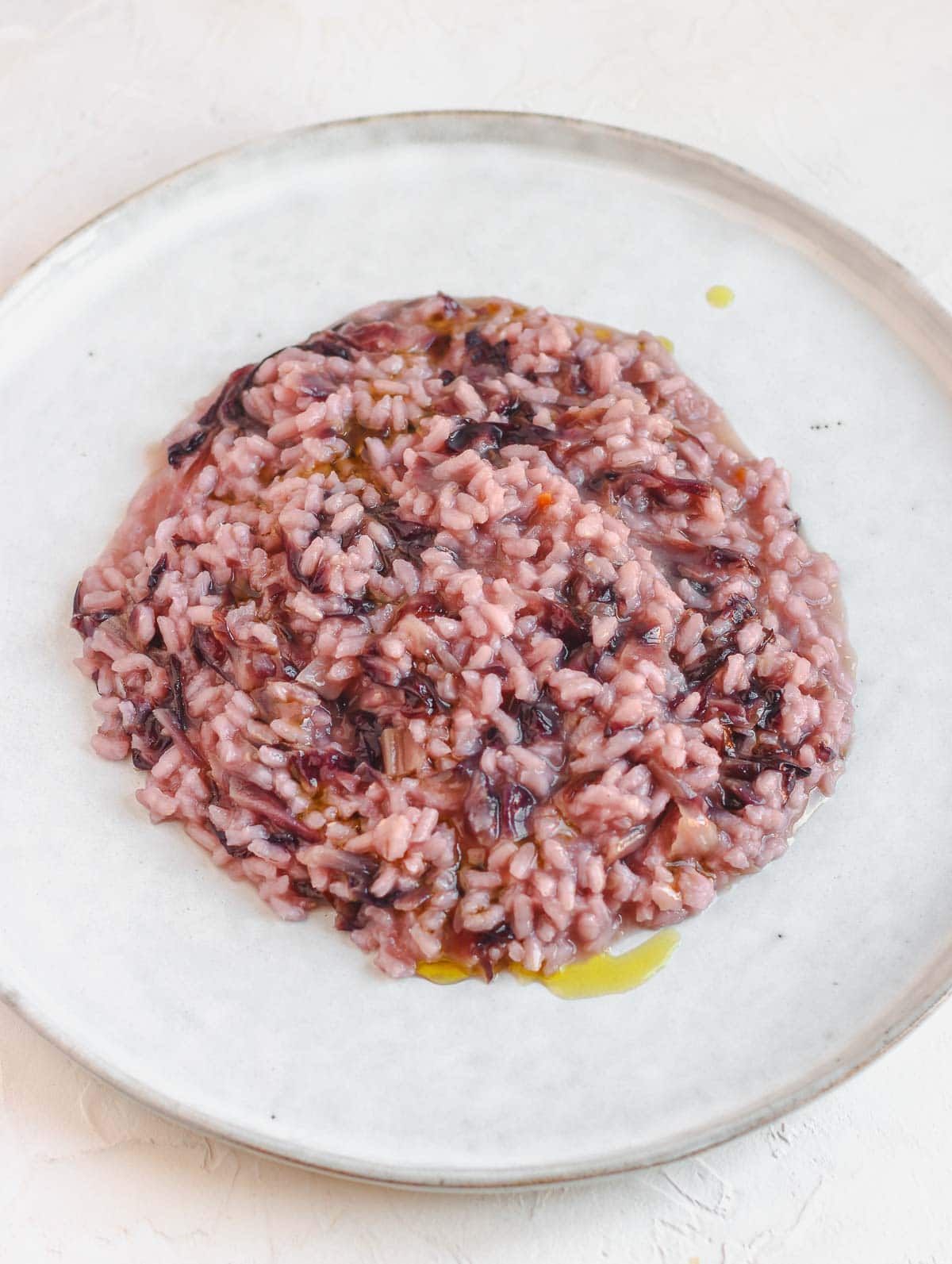
How to make vegan risotto
We start this vegan risotto by making the broth. Add the water to a pot, then add the vegetable stock (cube or powder) and a pinch of salt. You can replace the vegetable stock with 1 carrot, 1 onion, and 1 celery stalk. I prefer to do it this way.
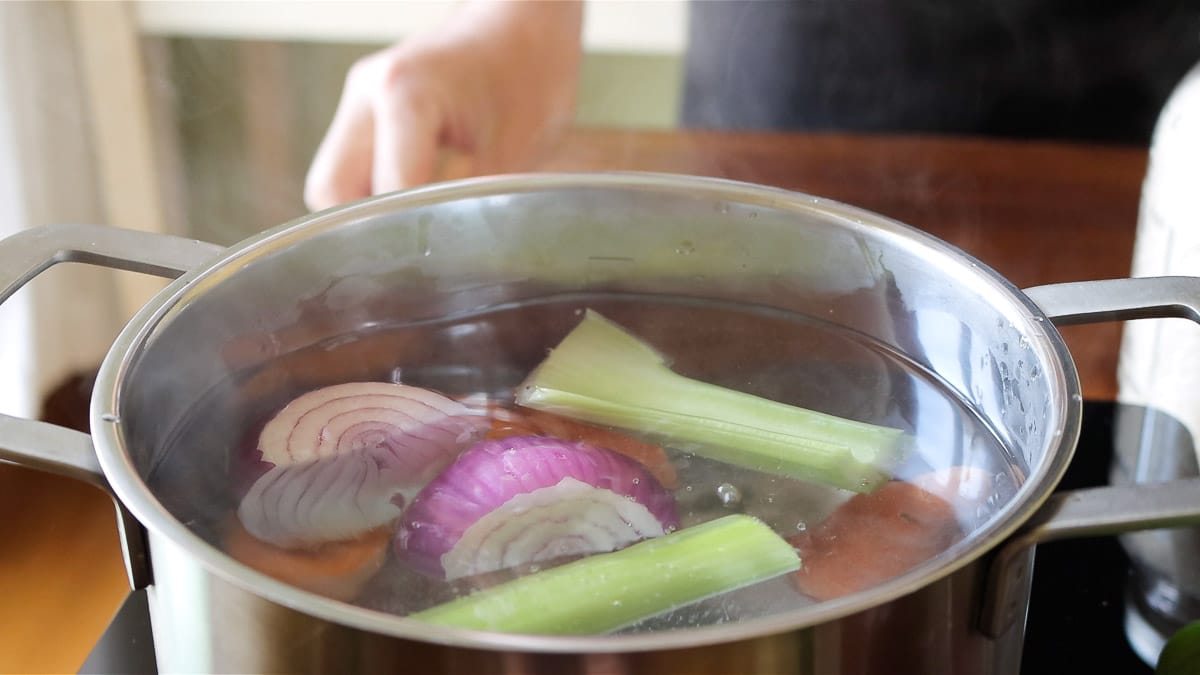
Chop your vegetable of choice in small dice and set aside. As mentioned before, you can really use most vegetables. If you use hard vegetables, like asparagus, pumpkin, butternut squash, then cut it in small dice so that they are easier to cook. If you use softer ones, like zucchini or chicory, then you can just slice it. Also, finely chop the onion.
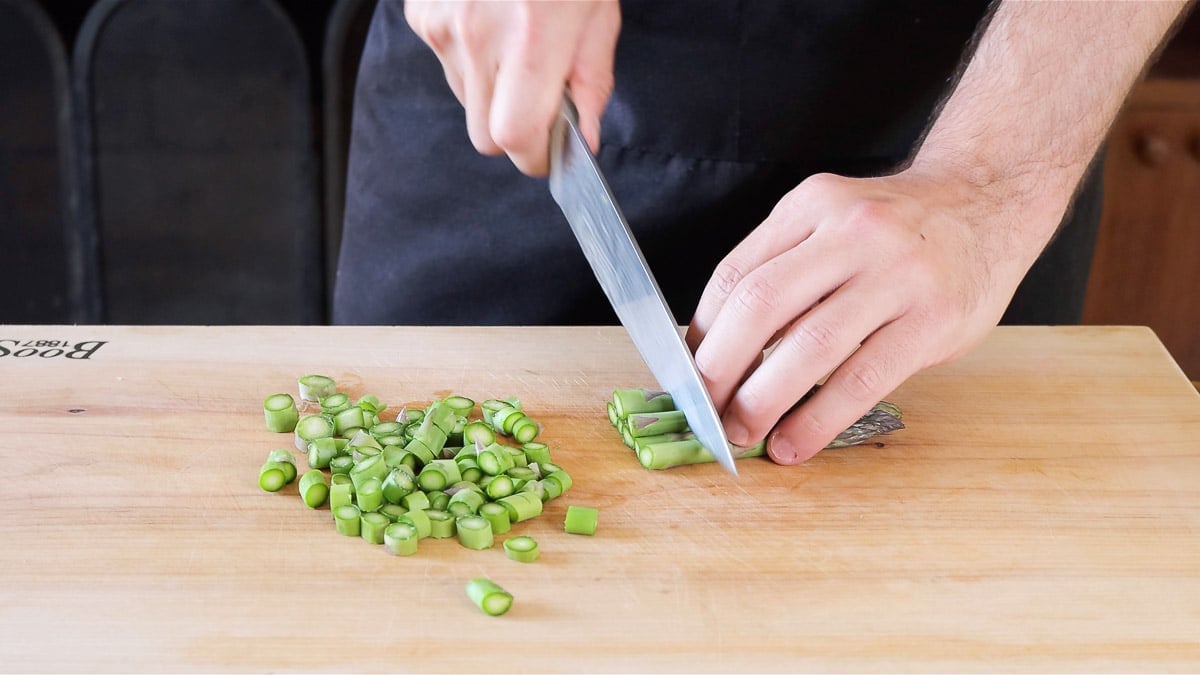
In a pot, on medium to low heat, add a drizzle of olive oil and the chopped onion. Fry the onion for 1 minute, then add the risotto rice and fry for another minute. Try not to burn the onion.
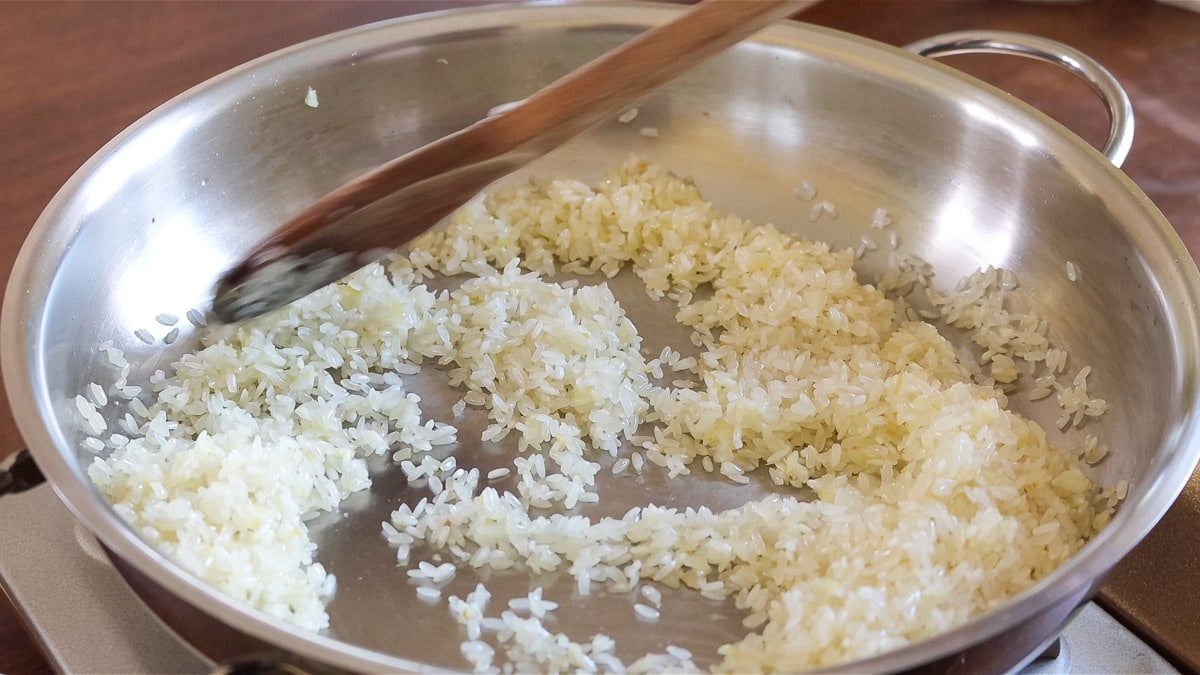
When the rice is shiny and toasted add the white wine, stir, and let the wine evaporate completely. Wine (or lemon juice) add acidity to the risotto, and acidity is a great flavour enhancer. So make sure not to skip this step.
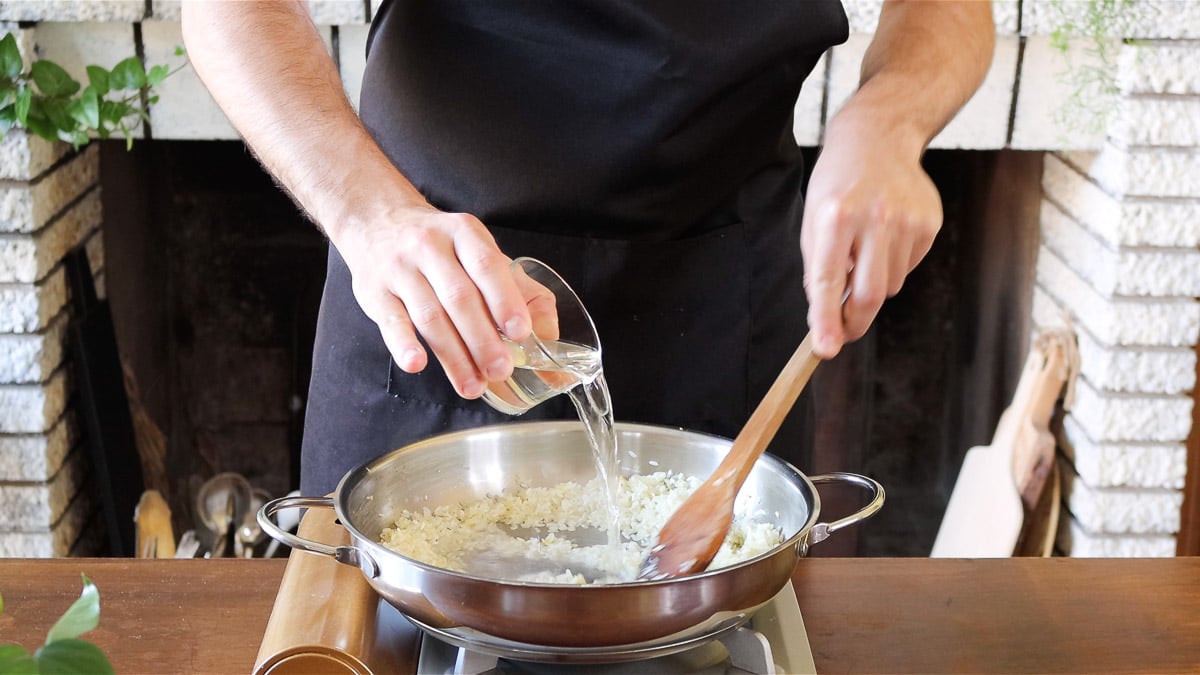
Now add 2 ladles of vegetable stock, your chopped vegetable of choice, and stir.
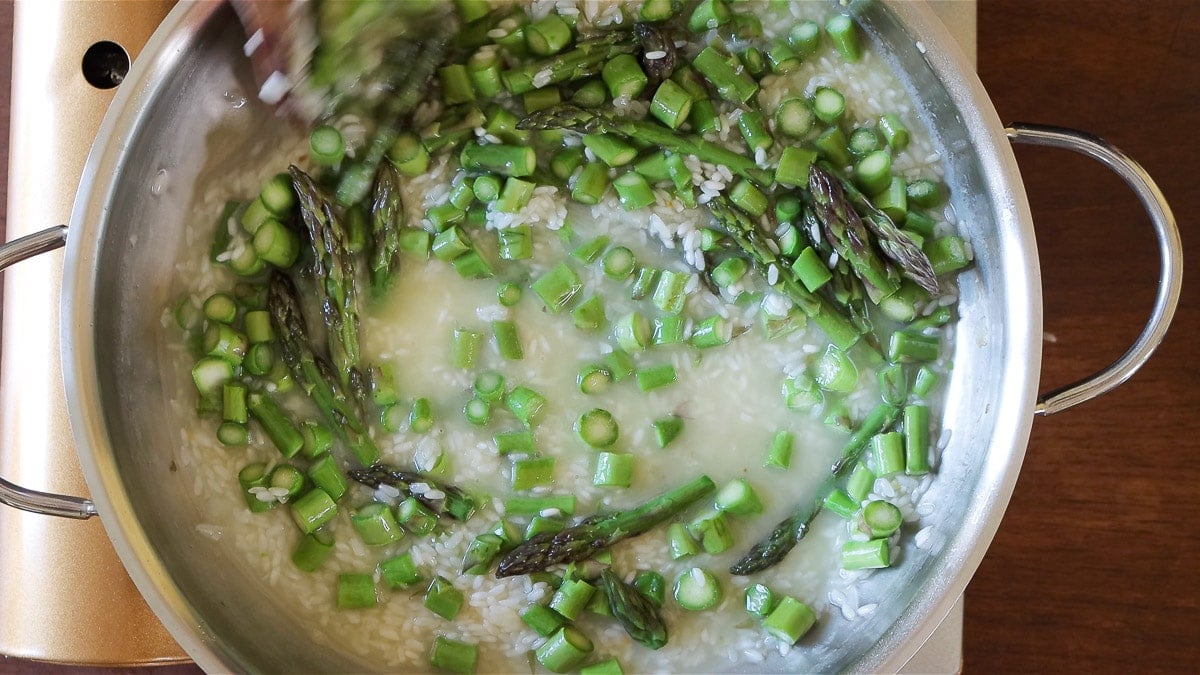
Finish cooking the risotto, stirring often and adding 2 ladles of vegetable stock as soon as the pan dries up. Keep the heat on medium to low. The rice should bubble very gently while it cooks.
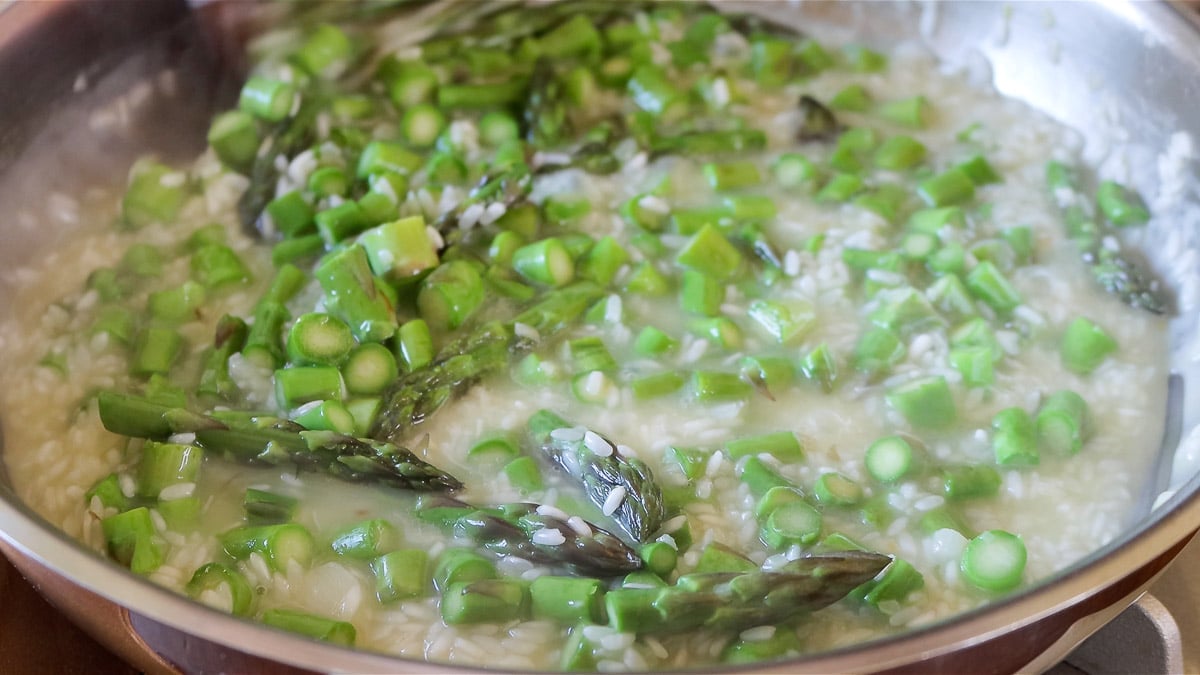
After about 13 to 15 minutes, taste the rice and adjust for salt. When the rice is “al dente”, or with a bite to it, turn the heat off and keep stirring for another minute.
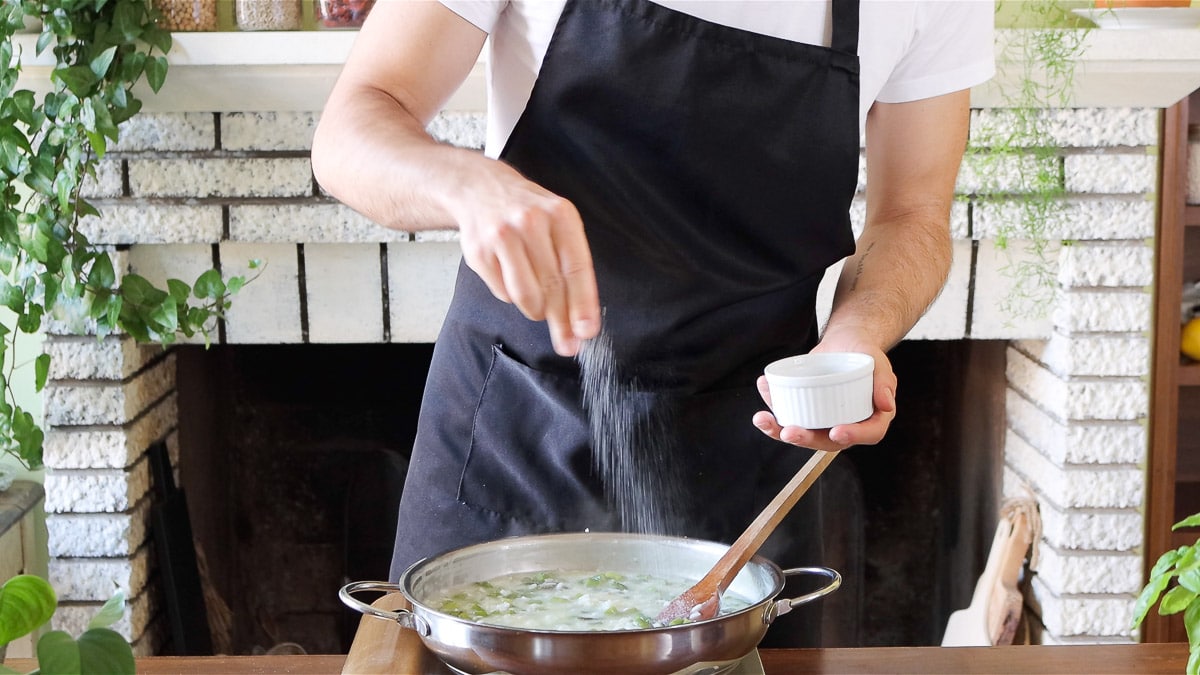
Now add the vegan butter (or margarine, or olive oil) and stir for one more minute, making the rice creamy. Your risotto is ready to be eaten.
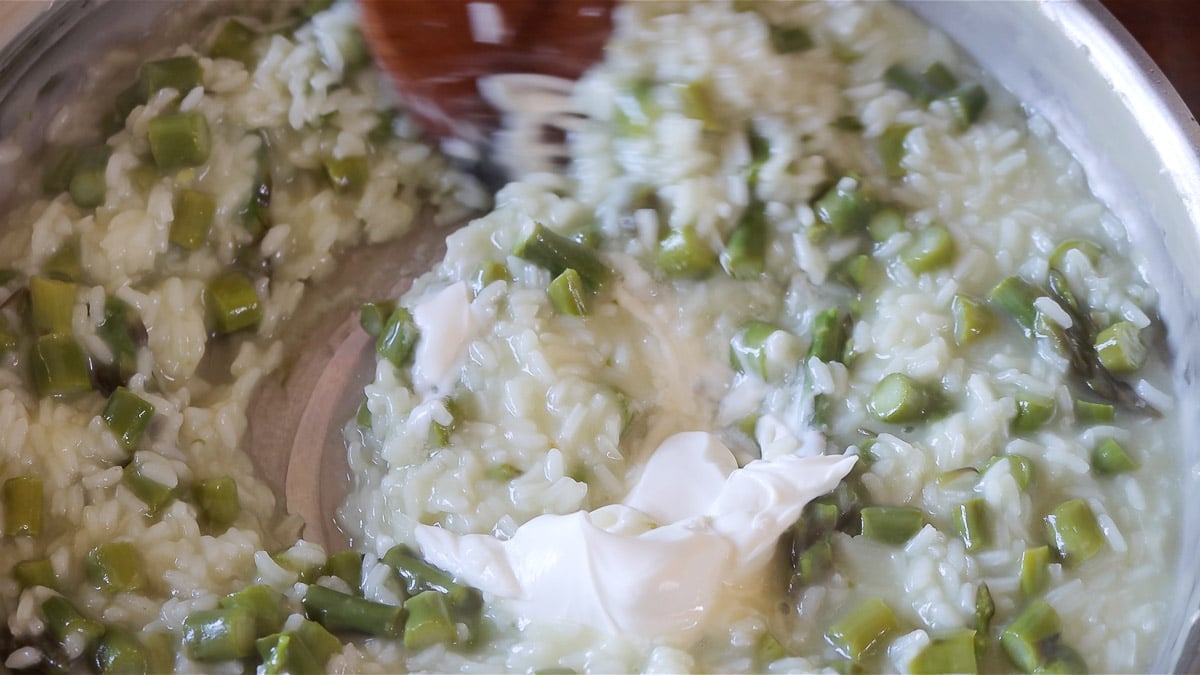
Serving suggestions
This risotto is delicious as is, without needing to add anything else and this is how we eat it most of the times. However, if you have some guests over and you want to impress them, then you can garnish the plate with:
- a sprinkle of freshly chopped parsley
- a drizzle of olive oil
- some crushed toasted almonds or walnuts
- a sprinkle of vegan cheese on top
- some extra veggies on top (I added some raw shaved asparagus here)
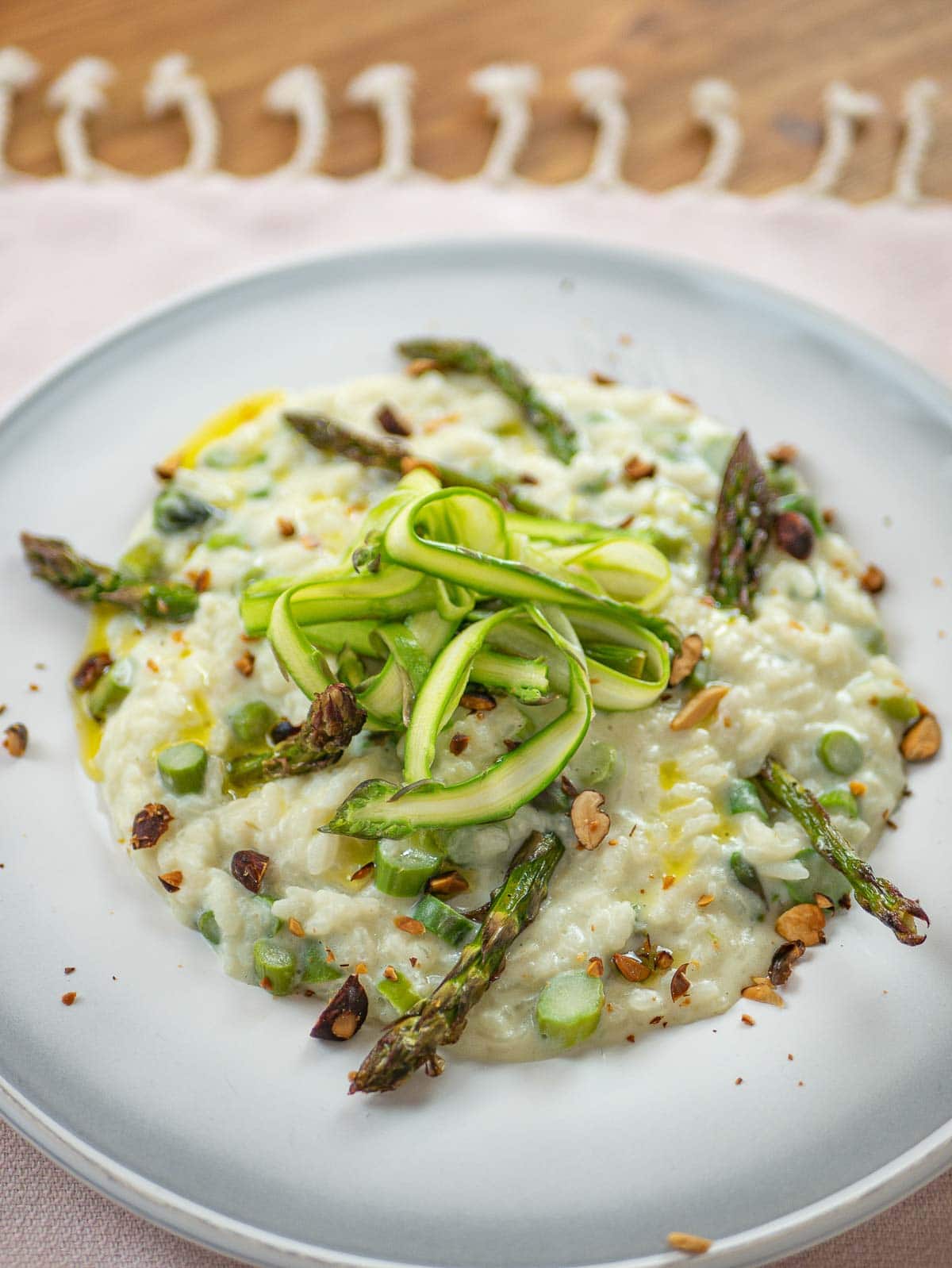
Tips
Keep stirring: if you want to get the best and creamiest risotto, then you need to keep stirring, almost for the whole time. Stirring helps the rice cook evenly, and it also helps the rice release the starch that will make this vegan risotto extra creamy.
Add stock a little at a time: we add stock two ladles at a time. Then when the stock is gone, we add more. Adding the stock slowly, while stirring, helps the rice grains release the starch gradually, and will make your dish very creamy.
Cook “al dente”: when you eat risotto you should be able to feel the different grains of rice in your mouth, it should not be mushy and overcooked. So taste it around the 13 minute mark to make sure you don’t overcook it. In Italian, cooking al dente means that your rice should have a slight bite to it.
Let rest for 1 minute before serving: once the risotto is al dente, turn off the heat, and let the rice rest for about 1 minute while stirring. Then add vegan butter, stir well, and serve it. During this time the rice will try to suck back some of the starch that it released during cooking, creating a creamy coating for each rice grain.
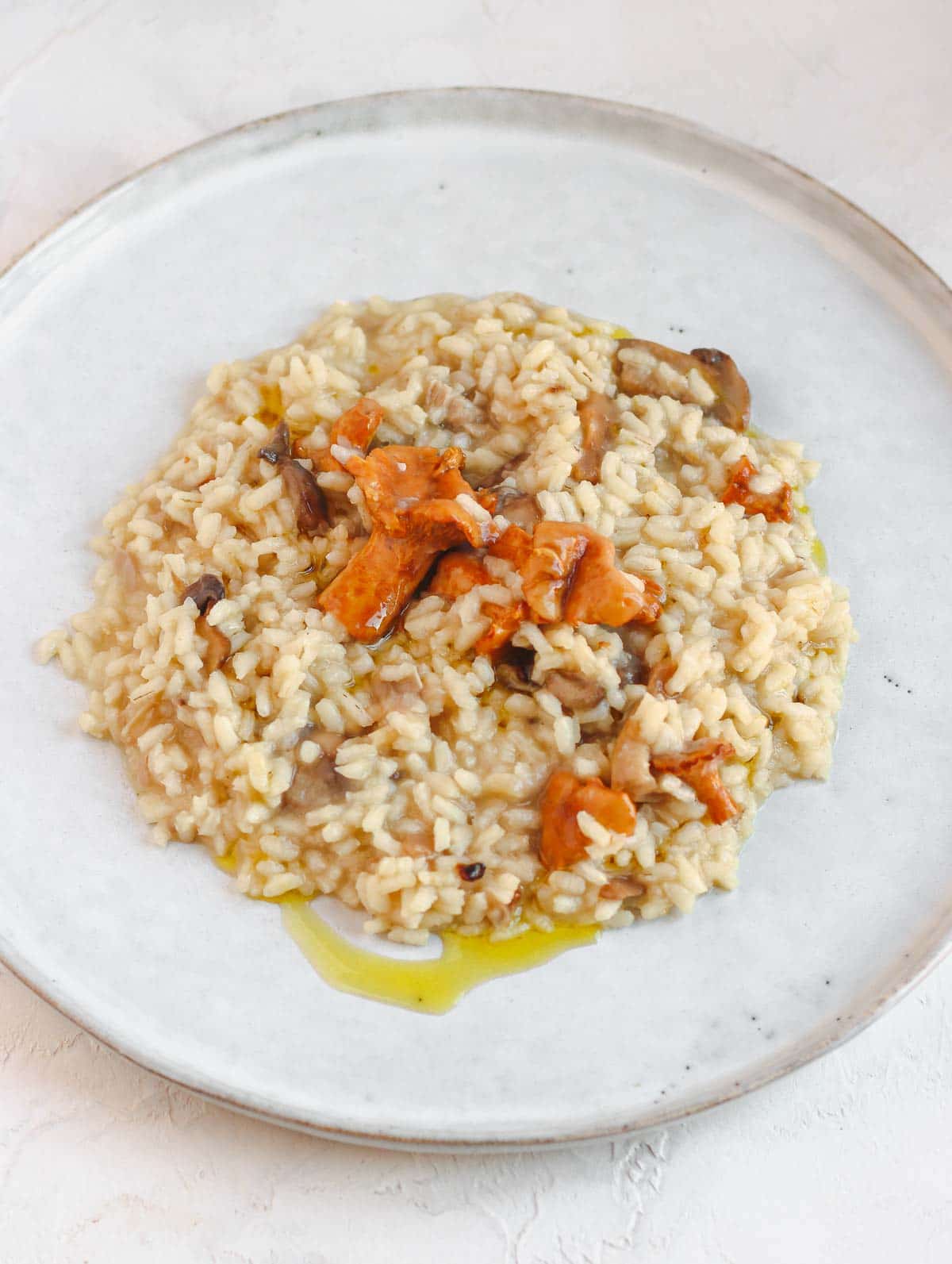
Frequently asked questions
We do not recommend making risotto in advance as the rice will overcook and it will become all mushy. It’s best to make and eat risotto straight away.
Risotto rice is free of gluten, so yes, risotto can be made gluten free. Just make sure to check the other ingredients that you add, like the margarine or the vegan butter.
You can make risotto with most short-grain, medium-grain white rice types, but you won’t achieve the creaminess of Italian risottos unless you use a rice that is specifically grown for risotto.
Look for a rice that says risotto rice on the package, or buy rice varieties such as carnaroli, arborio, vialone nano or roma.
No, basmati and jasmine are not suitable for making risotto because they are too thin and they do not contain enough starch.
Yes, you can use the same technique of risotto to make a risotto-like dish with wholegrain oats, barley and brown rice. Of course, the final dish will be different, but still delicious. We made an oat and pea risotto that is delish.
Storage
Risotto is best eaten straight after cooking it to preserve the integrity of the rice grain.
If you have leftovers, you can store them in the refrigerator for up to 24 hours and then heat it up on a stove with a dash of water, or in the microwave for a few seconds.
Similar Recipes
- Saffron risotto
- Asparagus risotto
- Creamy tomato risotto
- Eggplant risotto
- Zucchini risotto
- Steamed asparagus
- Easy braised artichokes
And if you have risotto leftovers, then check out these delicious Italian recipes:
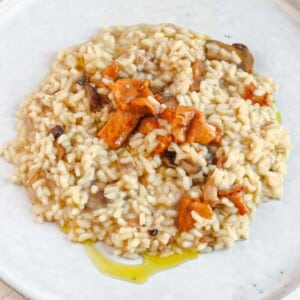
Vegan risotto
Ingredients
- 400 g your vegetable of choice mushrooms, asparagus, artichokes, chicory, pumpkin, zucchini, peas, etc…
- 210 g risotto rice
- ½ glass white wine or 3 tbsp of lemon juice
- ½ white onion
- 2 tbsp olive oil
- 1 – 2 tbsp vegan butter o margarine
- salt to taste
- 1 tbsp vegetable bouillon powder (or 1 carrot, 1 stalk of celery, 1 onion)
- 2 litres water
Instructions
- Chop your vegetable of choice in small dice and set aside. Finely chop the onion. In a pot, on medium to low heat, add a drizzle of olive oil and the chopped onion. Fry the onion for 1 minute, then add the risotto rice and fry for another minute.
- When the rice is shiny and toasted add the white wine, stir, and let the wine evaporate completely.
- Now add 2 ladles of vegetable stock and your chopped vegetable of choice and stir.
- Finish cooking the risotto, stirring often and adding 2 ladles of vegetable stock as soon as the pan dries up. Keep the heat on medium to low. The rice should bubble very gently while it cooks.
- After about 13 to 15 minutes, taste the rice and adjust for salt. When the rice is "al dente" or with a bite to it, turn off the heat off and keep stirring for another minute.
- Now add the vegan butter (or margarine, or olive oil) and stir for one more minute, making the rice creamy. Your risotto is ready to be eaten.

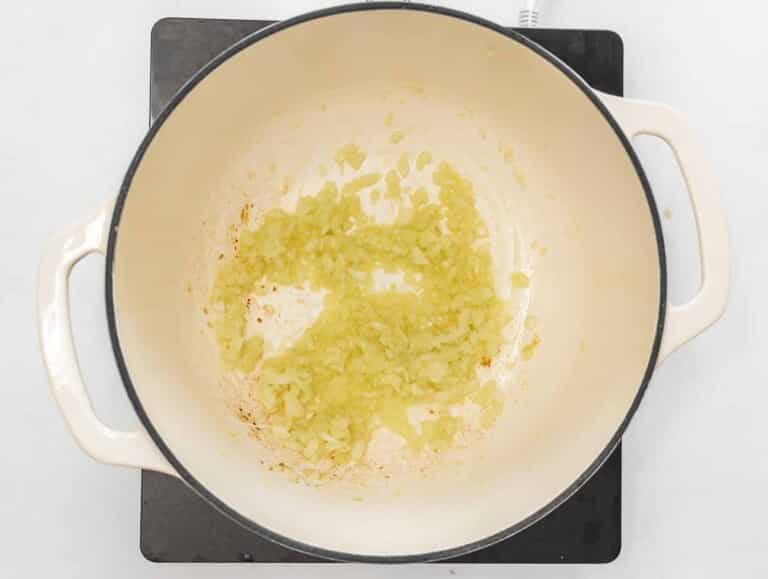
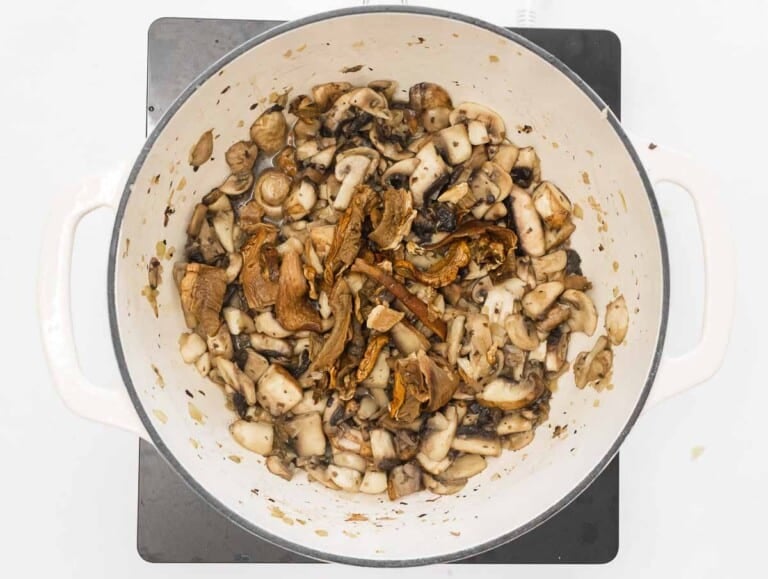
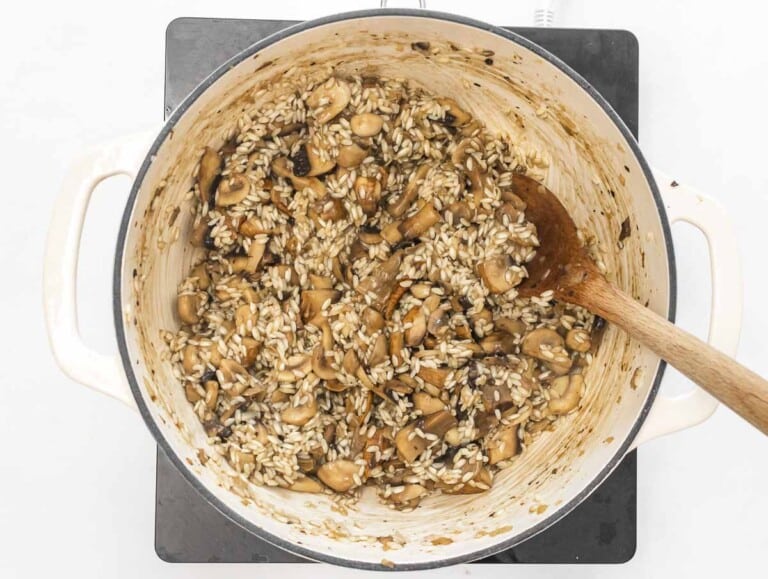
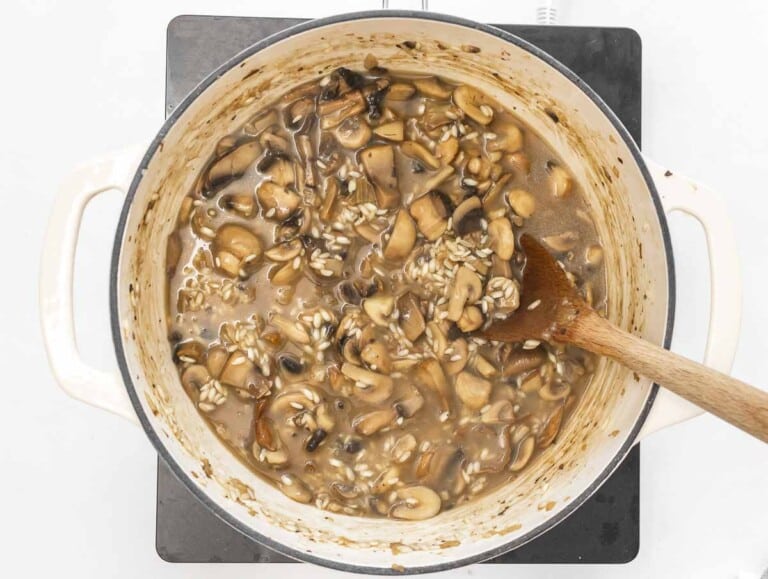
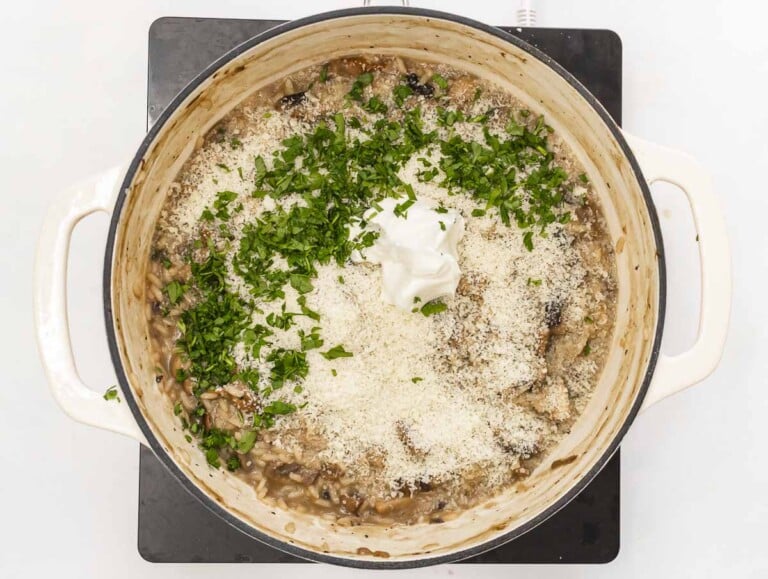
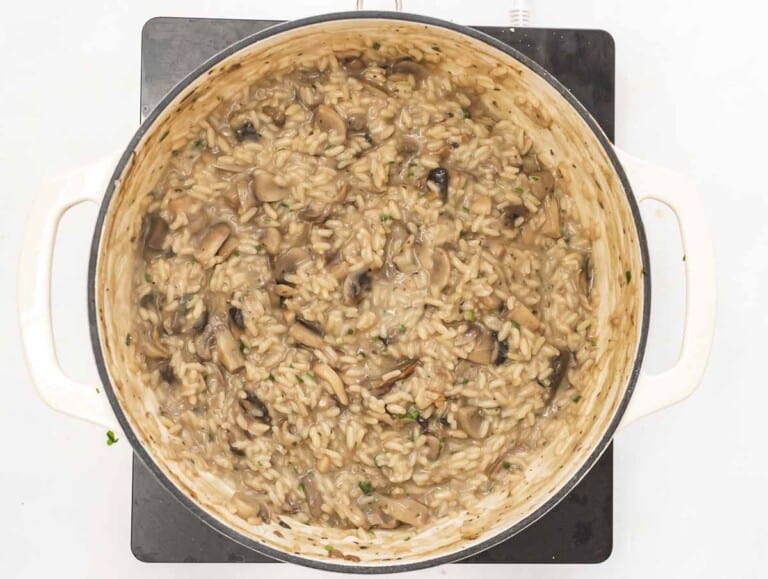
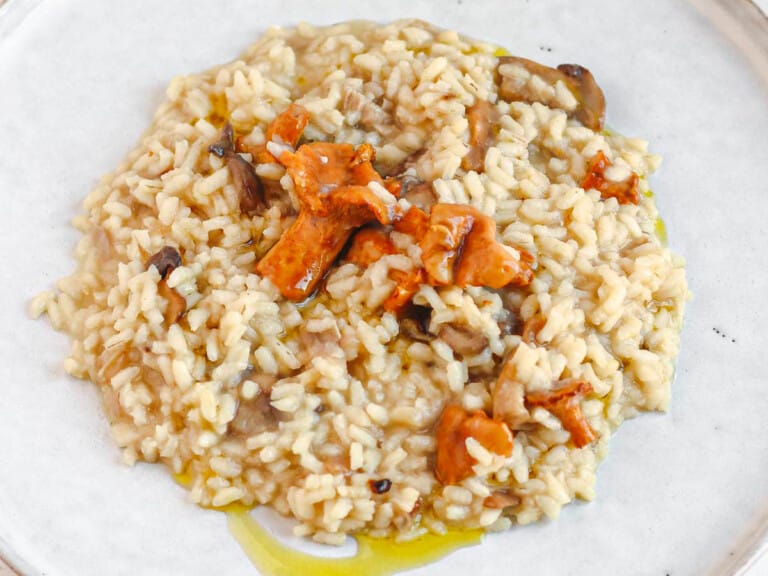

I always come back to this recipe when making risotto and it always turns out delicious. Easy and delicious, just how i like it 🙂